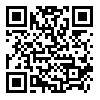BibTeX | RIS | EndNote | Medlars | ProCite | Reference Manager | RefWorks
Send citation to:
URL: http://ehj.ssu.ac.ir/article-1-26-en.html
Introduction: Urinary incontinence (UI) is a common disorder among aging population especially women. Women are at more risk of UI than men, because of anatomic, social and cultural status and also because of pregnancy, delivery and menopause. Regarding lack of studies in the area in Yazd, the study aimed to find the prevalence and related factors to UI among aging women in Yazd city, Iran.
Methods: The cross-sectional study carried out on 127 women aged ≥60 years in Yazd city, in central Iran, who was selected by clustered random sampling. Data were collected with the Persian version of International Consultation on Incontinence Questionnaire-Short Form and were analyzed with descriptive and inferential tests using SPSS software.
Results: The mean age of participants was 70.17 ± 6.50. The prevalence of UI was 62.2% while the prevalence of urge UI was 5.5%, stress UI was 39.4% and mixed UI was 3.1%. There was statistically significant relation between UI severity and history of diabetes (p < 0.01), glaucoma (p < 0.01), fecal incontinence (p < 0.01), menopause (p < 0.01) and pain in low abdomen (p = 0.02). Also there was a significant positive correlation between UI severity and women's age and weight.
Conclusion: Regarding the high prevalence of UI, especially stress UI and it's relation with some diseases such as diabetes and obesity, any intervention programs aimed to increase the healthy life style among women may be effective in management of UI.
Received: 2015/01/22 | Accepted: 2015/03/28 | Published: 2015/06/16
| Rights and permissions | |
 |
This work is licensed under a Creative Commons Attribution-NonCommercial 4.0 International License. |






